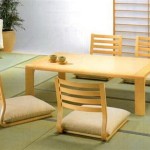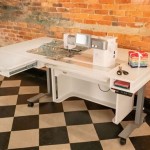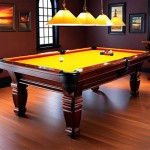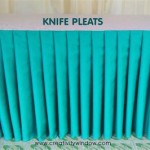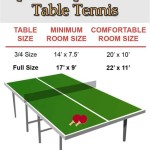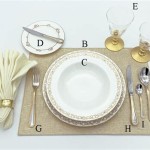Fabric Painting Designs On Tablecloths: A Comprehensive Guide
Tablecloths serve as the foundational element of table settings, contributing significantly to the overall aesthetics of a dining experience. While commercially produced tablecloths offer a range of designs, fabric painting provides a unique opportunity to personalize and elevate table décor. This approach transforms a simple fabric into a bespoke work of art, reflecting individual creativity and complementing the specific ambiance desired.
Fabric painting involves the application of specialized paints designed to adhere to and withstand the rigors of textiles. These paints, unlike ordinary paints, are formulated to be flexible and durable, resisting cracking, fading, and washing. The selection of appropriate paints, coupled with careful design and execution, results in a tablecloth that is both visually appealing and functional.
Selecting the Right Materials
The success of a fabric-painted tablecloth hinges on the selection of suitable materials, including the fabric itself, the paints, and the necessary tools. Each element plays a crucial role in the final outcome, impacting the durability, appearance, and overall quality of the finished product.
Fabric Choice: The ideal fabric for a painted tablecloth should be durable, easy to work with, and capable of absorbing paint effectively. Natural fibers such as cotton, linen, and hemp are commonly preferred due to their absorbency and ability to hold paint well. Blends of natural and synthetic fibers can also be used, offering a balance of durability and cost-effectiveness. A smooth, tightly woven fabric surface is generally recommended as it provides a better canvas for detailed designs. Pre-washing the fabric is essential to remove any sizing or finishes that may interfere with paint adhesion and to prevent shrinkage after the painting process.
Paint Selection: Fabric paints are specifically formulated for use on textiles, offering flexibility and washability. Acrylic-based fabric paints are a popular choice due to their versatility, ease of use, and wide availability. These paints are water-based, making them easy to clean up, and they come in a vast array of colors and finishes, including opaque, transparent, metallic, and glitter. Dye-based fabric paints offer a different approach, penetrating the fabric fibers and creating a softer, more subtle effect. These paints are often used for tie-dye and batik techniques. Regardless of the type of paint chosen, it is crucial to select high-quality paints that are labeled as permanent and washable.
Tools and Accessories: A range of tools and accessories can enhance the fabric painting experience and improve the quality of the final product. Paintbrushes of various sizes and shapes are essential for applying paint to the fabric. Stencil brushes, foam brushes, and detail brushes each serve a specific purpose, allowing for different techniques and effects. Stencils can be used to create precise and repeatable designs, while masking tape can be used to create clean lines and geometric patterns. Palette knives are useful for mixing and applying paint, and sponges can be used to create textured effects. Other helpful accessories include a palette for holding paint, water containers for cleaning brushes, and a heat-setting tool (such as an iron) for curing the paint and making it permanent.
Designing and Preparing the Tablecloth
Before embarking on the actual painting process, careful planning and preparation are essential. This includes designing the tablecloth motif, transferring the design to the fabric, and preparing the fabric surface for painting. A well-thought-out design and meticulous preparation will significantly contribute to the success of the project.
Design Inspiration: The design for a fabric-painted tablecloth can be inspired by a variety of sources, including nature, art, and personal interests. Floral motifs, geometric patterns, abstract designs, and themed illustrations are all popular choices. Consider the overall style and décor of the dining area when selecting a design to ensure that the tablecloth complements the existing aesthetic. Simple designs are often the most effective, allowing the fabric and paint to speak for themselves. More complex designs can be equally stunning, but they require more time, skill, and attention to detail. Sketching the design on paper before transferring it to the fabric is a helpful way to visualize the final product and make any necessary adjustments.
Transferring the Design: Once the design is finalized, it needs to be transferred to the fabric. Several methods can be used for this purpose, depending on the complexity of the design and the type of fabric. A simple method involves using a light box or a window to trace the design onto the fabric with a fabric marker or a light pencil. Alternatively, iron-on transfer paper can be used to transfer the design using a heat press or an iron. For more intricate designs, stencils can be created and used to outline the design on the fabric. Regardless of the method used, it is important to ensure that the design is accurately transferred and that the lines are clear and easy to follow.
Preparing the Fabric Surface: Preparing the fabric surface is crucial for ensuring that the paint adheres properly and that the design remains crisp and vibrant. Iron the fabric to remove any wrinkles or creases that may interfere with the painting process. Stretch the fabric taut over a flat surface, such as a tabletop or a piece of cardboard, and secure it with clamps or masking tape. This will prevent the fabric from shifting or puckering during painting. Protect the work surface by covering it with a drop cloth or newspaper. Consider using a fabric medium to pretreat the fabric, which can improve paint adhesion and prevent the paint from bleeding. Always follow the manufacturer's instructions for using fabric mediums and paints.
Painting Techniques and Application
The application of paint to the fabric is where the design comes to life. Mastering various painting techniques can enhance the visual impact of the tablecloth and add depth and dimension to the design. Accurate brushwork, consistent paint application, and careful attention to detail are essential for achieving a professional-looking result.
Brushwork Techniques: Different brushwork techniques can be used to achieve different effects. Flat washes involve applying a thin, even layer of paint over a large area, creating a smooth and uniform background. Dry brushing involves using a dry brush with a small amount of paint to create a textured, slightly rough effect. Stippling involves using a brush with stiff bristles to create a dotted texture. Detailing involves using a fine-tipped brush to create intricate lines and patterns. Experimenting with different brushwork techniques can add visual interest and complexity to the design.
Paint Application: Consistent paint application is crucial for achieving a uniform and professional-looking result. Avoid applying too much paint at once, as this can cause the paint to bleed or crack. Instead, apply thin, even layers of paint, allowing each layer to dry completely before applying the next. Use a light touch and avoid pressing too hard on the fabric, as this can distort the design. Pay close attention to the edges of the design, ensuring that the paint is applied cleanly and precisely. When mixing colors, do so on a palette to ensure that the colors are thoroughly blended and consistent.
Special Effects and Embellishments: Various special effects and embellishments can be added to the fabric-painted tablecloth to enhance its visual appeal. Glitter paints can add sparkle and shimmer to the design. Metallic paints can create a luxurious and elegant effect. Fabric markers can be used to add fine details and outlines. Stencils can be used to create repeating patterns and geometric designs. Beads, sequins, and other embellishments can be sewn or glued onto the fabric to add texture and dimension. When using embellishments, ensure that they are securely attached and that they will withstand washing and wear.
Curing and Care: After the painting is complete, it is essential to cure the paint to make it permanent and washable. Most fabric paints require heat-setting, which involves ironing the painted fabric with a hot iron. Follow the manufacturer's instructions for heat-setting, as the temperature and duration may vary depending on the type of paint used. Protect the painted surface by placing a piece of cloth or parchment paper between the iron and the fabric. After heat-setting, allow the tablecloth to cool completely before washing it. When washing the tablecloth, turn it inside out and use a gentle cycle with cold water. Avoid using harsh detergents or bleach, as these can damage the paint. Tumble dry on low heat or hang to dry. With proper care, a fabric-painted tablecloth can last for many years, adding a personal touch to any dining experience.

Fabric Painted Table Cloth

Made In China Fabric Painting Designs Table Cloth Waterproof Tablecloth And Wipe Clean Com

Tablecloth Fabric Painting At Best In Goa By Navani Creations Id 5357316955

Bedsheet Painting Idea Centre Design For And Table Cloth Fabric Tutorial

Fabric Paint Patterns Chemosol

Tablecloth Fabric Painting At Best In Goa By Navani Creations Id 5357316955

Hand Painted Saree Designs Fl Art On Fabric

Fabric Painting On Table Sheet Mejposh Design Art With Vandana

Fabric Painting Designs On Tablecloth Indusladies

Fabric Paint Patterns Chemosol
Related Posts

